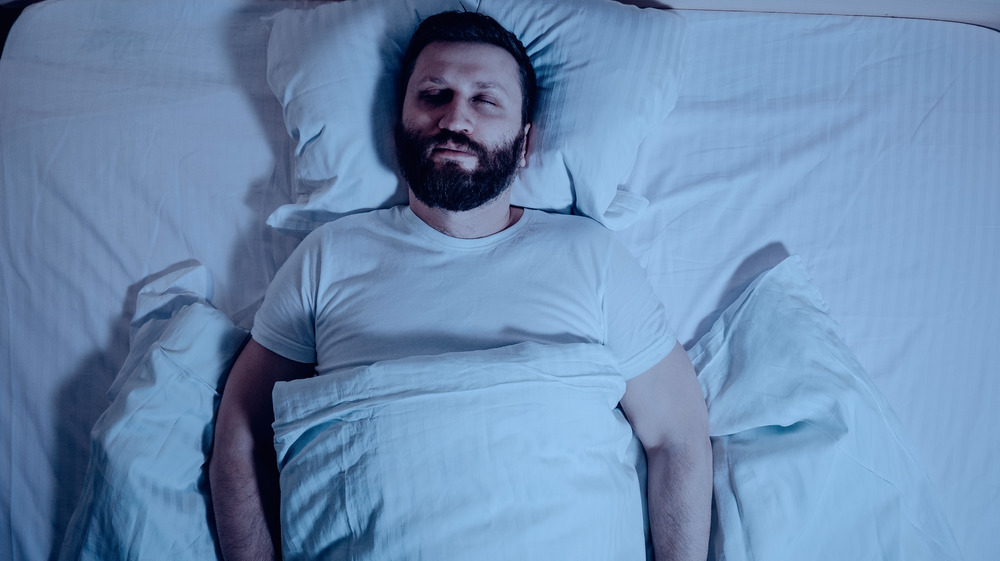If You Sleep On Your Back, This Is What Happens To Your Body
Quality of sleep is key to maintaining a healthy lifestyle. You've probably spent many nights tossing and turning trying to find the perfect sleeping position. A good night's rest is attainable, but sleeping positions can vary by person.
Sleeping exclusively on your side can prompt shoulder pain, while stomach sleepers may experience neck or back pain. But if you prefer to sleep on your back, you're in luck — experts say that alternating between your back and side puts less pressure on your spine (via the Cleveland Clinic).
Sleeping on your back, or supine sleeping, helps prevent your body from compressing or twisting your spine and it alleviates back and neck pain, according to Medical News Today. Poor neck alignment throughout the night can also lead to headaches — this can be avoided by sleeping on your back. Furthermore, if you use a memory foam or latex pillow to support your neck, sleeping on your back could help with sleep apnea.
How to switch to sleeping on your back
Some studies say that sleeping on your back can help you look more youthful, too. When you sleep on your stomach or side, the pressing of your face in your pillow can cause sleep wrinkles, and age your skin over time (via Medical News Today).
Is it possible to switch your sleeping position? The answer is yes, but it may require some retraining. We switch positions anywhere from 11 to 45 times a night (via The National Sleep Foundation), so you may not be a perfect supine sleeper right away.
If you want to try supine sleeping, you can start using a small round pillow under your neck and a flat pillow under your head or you can try using a memory foam pillow to help you get comfortable. If laying flat on your back is uncomfortable, you can place a pillow under your knees and lower back. You should also evaluate if your mattress is supportive enough for your sleeping needs.


